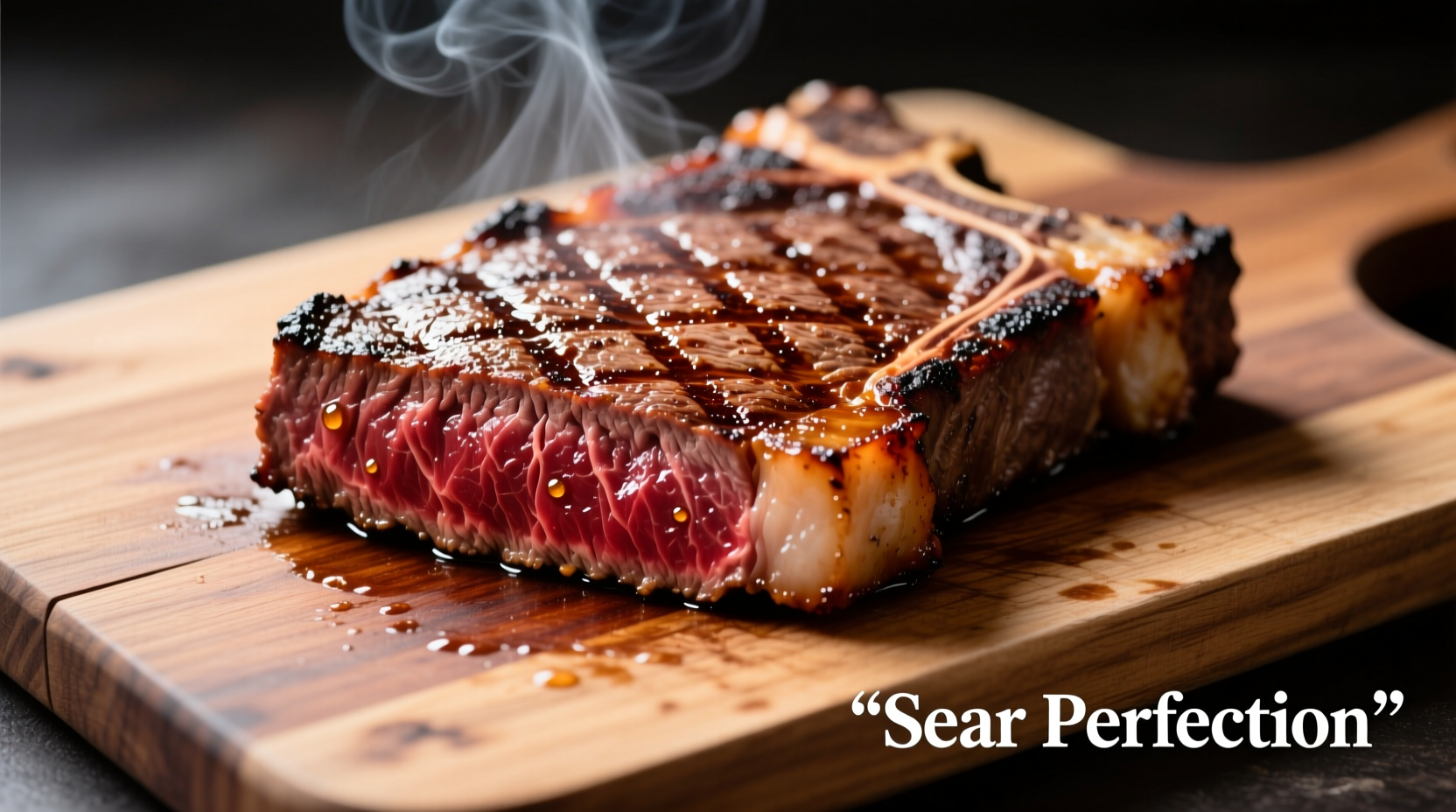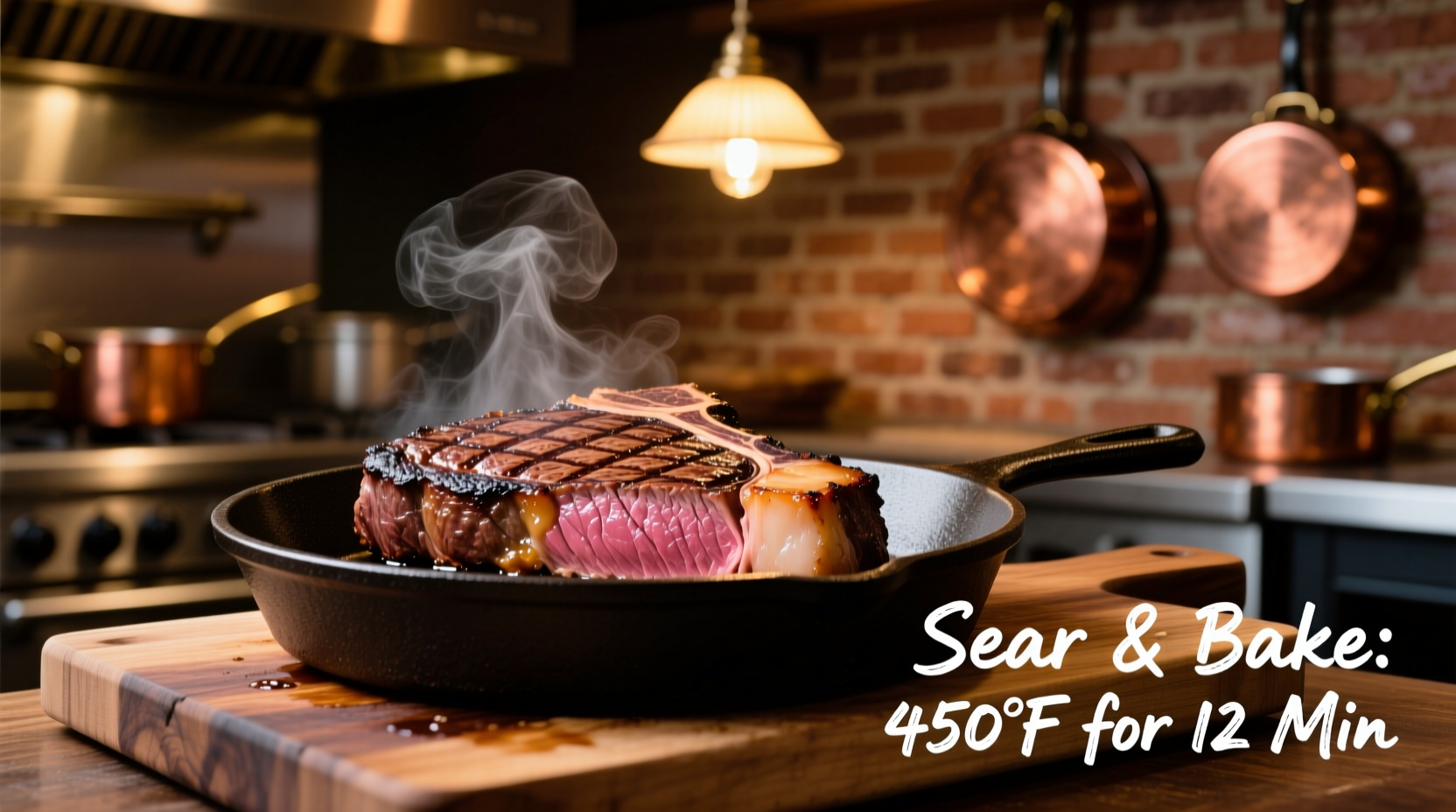Mastering oven-cooked New York strip steak transforms an expensive cut into a restaurant-quality meal with minimal equipment. Unlike grill-dependent methods, this oven technique delivers consistent results regardless of weather or cooking space limitations. The combination of initial sear and precise oven timing creates that coveted crust while maintaining perfect internal doneness from edge to edge.
Why Oven Cooking Works Best for New York Strip
New York strip's balanced marbling and firm texture make it ideal for oven finishing. Unlike thinner cuts that overcook quickly, this 1-1.5 inch thick steak benefits from the controlled environment of your oven. Food science confirms that the Maillard reaction (that delicious browning) occurs most effectively between 300-500°F - perfectly matching standard oven capabilities.
| Cooking Method | Temperature Control | Edge-to-Edge Doneness | Required Equipment |
|---|---|---|---|
| Oven Finish | Excellent (precise) | Perfect (even) | Skillet + Oven |
| Grill Only | Variable (fluctuates) | Uneven (hot spots) | Outdoor Grill |
| Pan Only | Good (monitor closely) | Good (thinner cuts) | Heavy Skillet |
Essential Preparation Steps
Proper preparation separates good steak from great steak. Remove your New York strip from refrigeration 45-60 minutes before cooking. This critical step allows the meat to reach 50-55°F throughout, preventing the common mistake of a cold center and overcooked exterior. Pat the steak completely dry with paper towels - moisture is the enemy of proper searing.
Season generously with coarse kosher salt (1½ tsp per pound) and freshly ground black pepper. For enhanced flavor development, consider adding these professional touches:
- Press seasoning into the meat's surface
- Add 1 minced garlic clove and fresh thyme sprigs during searing
- Include 1 tbsp high-smoke point oil (avocado or grapeseed)

Step-by-Step Cooking Process
Searing phase: Heat oven-safe cast iron skillet over medium-high heat for 5 minutes until smoking slightly. Add oil, then place steak in skillet at 45-degree angle to maximize surface contact. Sear undisturbed for 2-3 minutes until deep brown crust forms. Flip and sear opposite side 2 minutes.
Oven finishing: Transfer skillet immediately to preheated 400°F (204°C) oven. Cook according to thickness:
- 1-inch steak: 8-10 minutes for medium-rare
- 1.5-inch steak: 12-15 minutes for medium-rare
- Insert thermometer horizontally from side for accurate reading
USDA Food Safety and Inspection Service confirms that beef is safe to consume at 130°F when held for 112 minutes, though most prefer immediate consumption at 130-135°F for medium-rare. Their research shows this temperature destroys harmful bacteria while preserving juiciness.
Critical Resting Technique
Never skip resting! Transfer steak to wire rack (not cutting board) and tent loosely with foil. Rest for 8-10 minutes - this allows juices to redistribute through the muscle fibers. Cutting too soon releases up to 30% of those precious juices onto your plate instead of staying in the meat. During this time, internal temperature will rise 5-10°F (carryover cooking).
When Oven Method Works Best (and Limitations)
This technique shines with steaks 1-1.5 inches thick. For thinner cuts under 1 inch, complete cooking in skillet to prevent overcooking. Extremely thick steaks (over 2 inches) benefit from reverse sear method - starting in low oven then finishing with high-heat sear.
Environmental factors affect results: At high altitudes (above 3,000 feet), increase oven temperature by 25°F as water boils at lower temperatures, affecting cooking dynamics. Humidity levels above 70% may require slightly longer searing to achieve proper crust formation.
Troubleshooting Common Issues
Problem: Steak sticking to pan during sear
Solution: Ensure proper preheating - pan should sizzle immediately when water droplets hit surface. Don't move steak until it naturally releases.
Problem: Uneven cooking with gray band
Solution: Check oven calibration with independent thermometer. Position rack in center of oven for even heat distribution.
Problem: Overcooked despite following timing
Solution: Always use instant-read thermometer rather than relying solely on timing. Steak thickness varies significantly between cuts.











 浙公网安备
33010002000092号
浙公网安备
33010002000092号 浙B2-20120091-4
浙B2-20120091-4